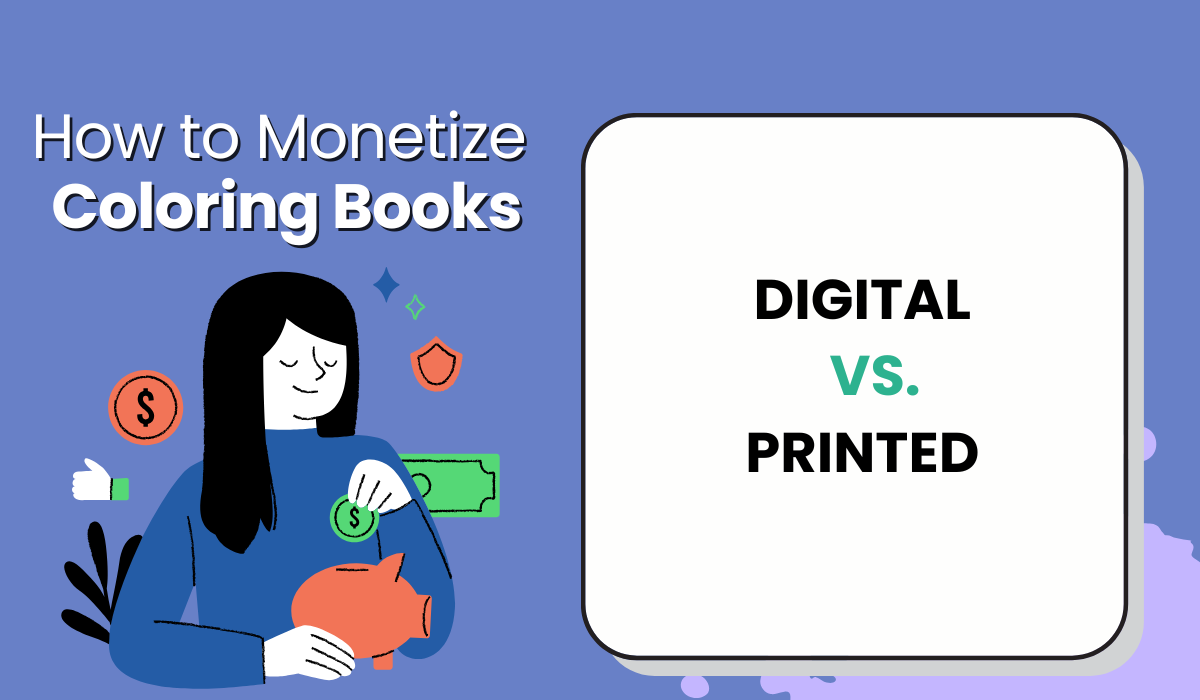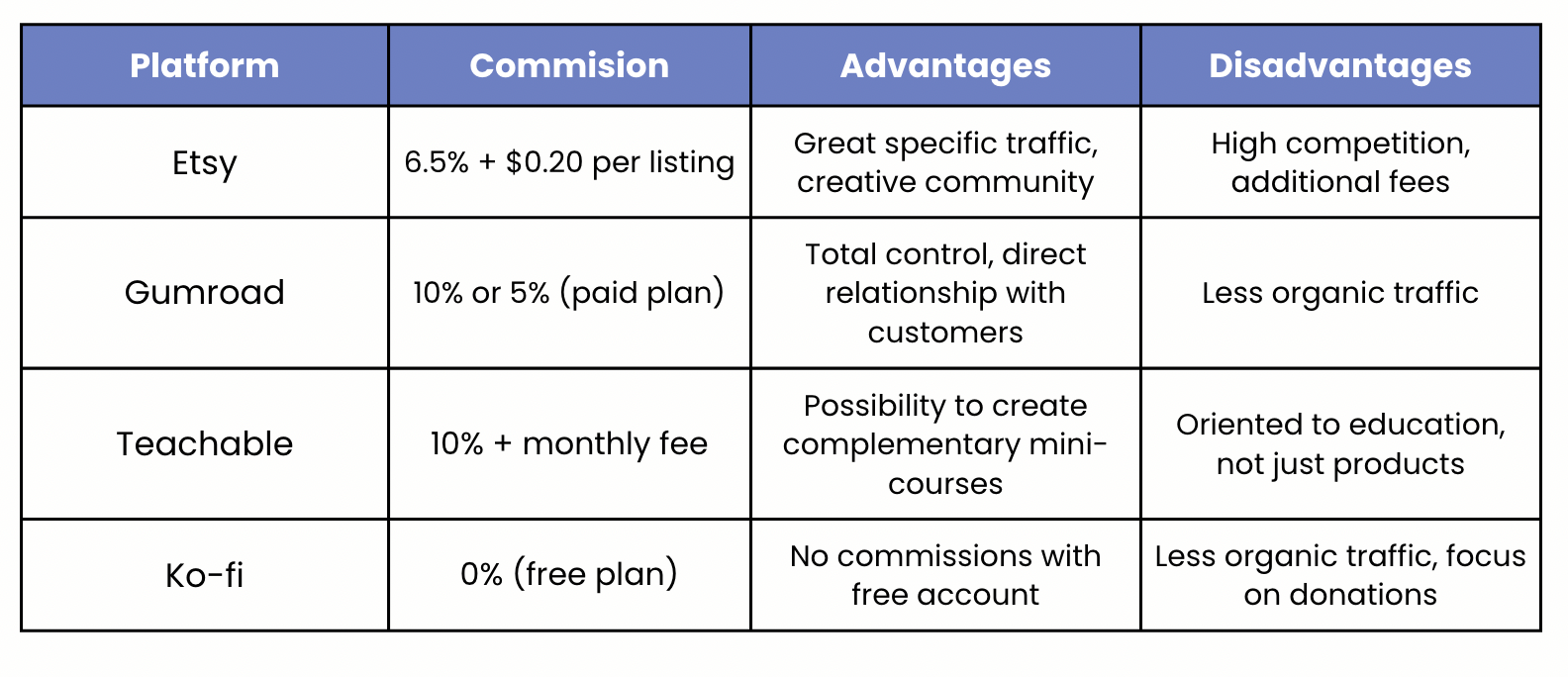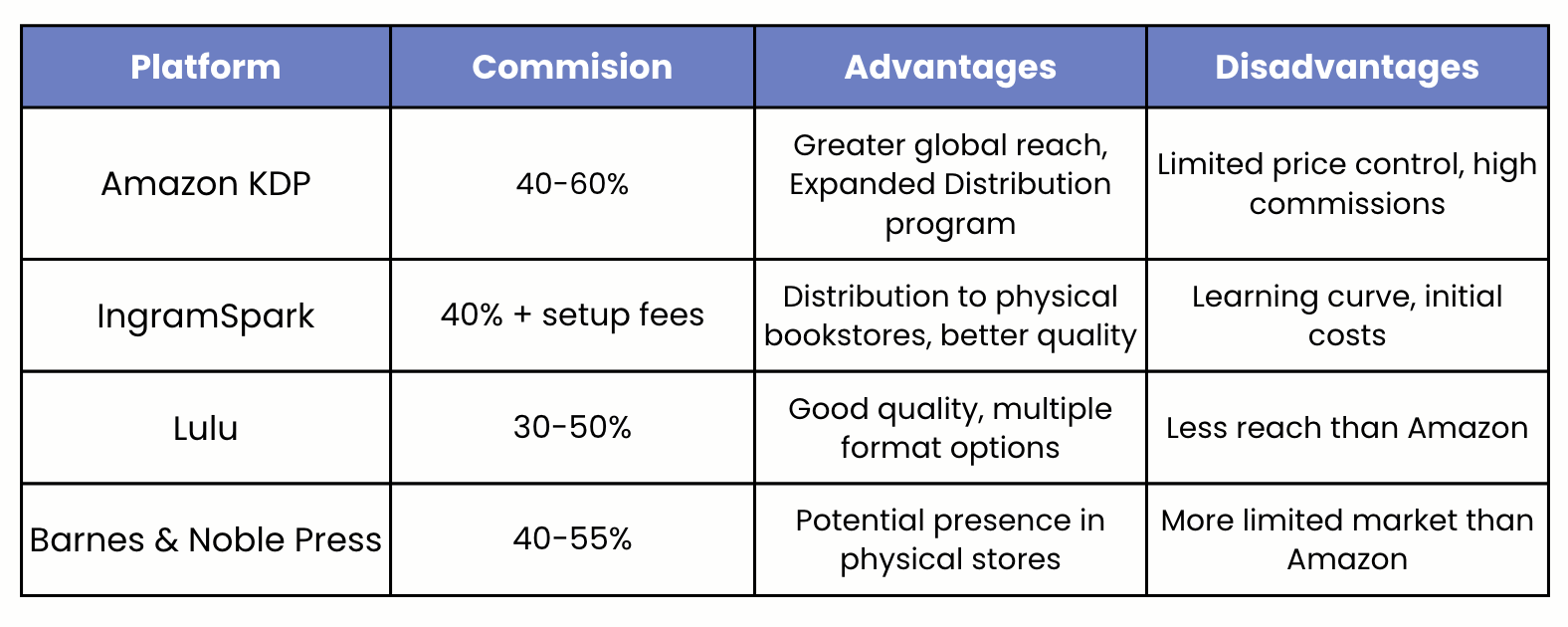Monetize Coloring Books: What’s the Most Profitable Format?

Learn how to monetize coloring books in both digital and print formats. Choosing the right format significantly impacts your profits, explore the pros, cons, and key strategies for maximum revenue.
Table of Contents
The Current Landscape: What You Should Know Before Starting
Before deciding which format to prioritize, let’s look at current market figures:Buying Trends in 2024-2025:
- Digital books: 47% growth compared to the previous year
- Printed books: Stable growth of 8.5% compared to the previous year
Average Prices:
- Digital: $7.99 – $12.99
- Printed: $14.99 – $24.99
Digital Format. Keys to Maximizing Benefits
Economic Advantages:
Superior Profit Margins
- Initial investment: Color In AI subscription (from $19.99/month) to generate your designs
- Production costs: Practically zero after creating the content
- No shipping or storage expenses: Unlike the physical format
- Possibility to update: Improve your product without additional costs.
2. Simplified Pricing Structure

3. Unlimited Sales, No Restrictions
The magic of the digital format is that you can sell the same product indefinitely:- No stock depletion: Sell the same file over and over
- Global reach: Customers from any country can buy instantly
- Greater viral potential: Easy to share and recommend
Disadvantages and Limitations:
- Lower perceived value: Consumers tend to perceive less value in digital products
- Greater piracy: Risk of unauthorized distribution
- Greater price competition: Downward price trend due to saturation
- Experience limitations: Absence of the tactile component of traditional coloring
Digital Sales Channels:
1. Specialized Platforms

2. General Marketplaces

3. Direct Sales
- Own website: Maximum control and margin (only payment processing costs ~3%)
- Email marketing: Building own audience, high conversion (20-30% higher)
- Social networks: Direct sales through own profiles or community groups
Monetize Coloring Books with Printed Versions
Economic Advantages:
Available Production Models
Print-on-Demand (POD):
- Production costs: $3-7 per unit depending on pages and quality
- No initial investment: Production only after sale
- Average net margin: 40-60% depending on sale price
- Main platforms: Amazon KDP, Lulu, IngramSpark
Batch printing:
- Production costs: $1.50-4 per unit (with orders of 100+ units)
- Initial investment: $150-400 for initial inventory
- Average net margin: 60-80% on direct sales
- Requirements: Storage, inventory management, and shipping
POD Pricing Structure and Analysis

Superior Perceived Value
- Higher accepted price: 50-100% higher than digital format
- Ideal for gifts: Increases sales in specific seasons
- Premium opportunity: Possibility of deluxe versions with higher margins
Disadvantages and Limitations:
- Reduced margins: Production costs decrease the profit per unit
- Logistical complexity: Management of returns, printing issues
- Geographic limitations: Costs and complexity of international shipping
- Greater initial investment: For options outside POD
Physical Sales Channels:
POD Self-Publishing Platforms

Direct Physical Sales
- Local markets and fairs: Full margin (80%+), direct customer contact
- Consignment in local stores: Typical agreements of 60/40 or 70/30 in your favor
- Wholesale to retailers: 40-50% discounts but compensatory volume
Own E-commerce with Fulfillment
- Shopify + fulfillment service: Brand control, automated management, 60-70% margin
- Etsy with own shipping: Specific creative community, 70-80% margin minus fees
- Dropshipping platforms: Integration with printers for automated management
Best Strategy to Monetize Coloring Books Using Both Formats
The most successful creators often combine both formats. Here’s how to monetize coloring books with a hybrid strategy:
1. Staggered Launch Approach- Initial digital launch ↓
- Collecting feedback and improvements ↓
- Launching optimized printed version ↓
- Creating bundles and complementary offers
- Minimizing initial risks
- Validating and improving the product with minimal investment
- Maximizing the life cycle and total earnings
Cross-Monetization Strategies
- Digital → physical upselling: “Like the digital version? Get the complete experience with the printed version”
- Bundling: Offer the digital version as a bonus when buying the physical one
- Collectible editions: Limited physical versions for recurring digital buyers
Adapted “Freemium” Model
- Free digital samples: 5-10 free pages to generate leads
- Basic digital → premium digital → physical: Ascending value ladder
- Membership with mixed benefits: Subscription that includes digital content and discounts on physical products
Sales Channels. Where to Sell Each Format
Optimal combination to maximize reach:
Phase 1: Establishment (1-3 months)
- Digital: Gumroad or your own site + 1-2 marketplaces (Etsy/Amazon)
- Physical: Amazon KDP exclusively (minimize complexity)
Phase 2: Expansion (4-6 months)
- Digital: Add secondary platforms, build email list
- Physical: Add IngramSpark for expanded distribution
Phase 3: Optimization (7+ months)
- Digital: Prioritize direct sales, use marketplaces for acquisition
- Physical: Explore direct sales with higher margin, specialized stores
Specific strategies by channel:
Amazon KDP
- Categories: Select less competitive combinations
- Keywords: Exhaustive research of niche terms
- Description: Optimization for algorithm + real readers
- Look Inside: Ensure the first pages are impactful
- A/B testing of covers (using ads as a test)
- Systematic review strategy
- Bundle of several books to increase perceived value
Direct Platforms (Etsy, Gumroad, own)
- Customer data capture
- Flexibility in prices and promotions
- Direct communication
- Implementation of loyalty programs
- Creation of exclusive packages not available on Amazon
- Volume discounts not possible on other platforms
- Exclusive additional content for direct buyers
Case Study. The Path from $0 to $3,000 Monthly
Real story: Ana L. – From teacher to coloring book entrepreneur
Ana started with no design experience or technical knowledge, using Color In AI to create her designs. Month 1-2: Validation- Creation of 2 digital books in educational niche
- Platforms: Gumroad + Etsy
- Investment: $50 (mainly in professional cover design)
- Results: 45 digital sales ($7.99) = $359 income / $320 net profit
- Launch of printed version on Amazon KDP
- Creation of 1 additional book
- Platforms: Added Amazon for digital and physical
- Results: 120 digital sales + 85 physical = $2,080 income / $1,250 net profit
- Optimization of listings according to data
- Email marketing system for direct sales
- Creation of 2 additional books
- Results: 180 digital sales + 130 physical = $3,275 income / $2,150 net profit
- Catalog of 8 complementary books
- Automated marketing system
- Direct B2B sales to local schools
- Results: Average of $4,500 monthly income / $3,200 net profit”
“The key was not sticking to just one format or channel. Each book I create now generates income from at least 3-4 different sources, multiplying the value of my invested time.” – Ana L.
Lessons from the case study:
- Start digital, expand to physical: Minimizes initial risks
- Diversify gradually: Add channels one by one, mastering each one
- Reinvest initial profits: In professional covers and marketing
- Build own assets: Email list, community, B2B relationships
- Systematize processes: Document to scale without increasing personal time
Conclusion: Designing Your Personalized Strategy
The debate between digital and printed has a clear answer: both, strategically implemented at the right time. Choosing the right format is only the first step. Now it’s time to take action and monetize coloring books on your own terms:- Available resources: With limited budget, start digital
- Technical skills: Direct sales require more technical knowledge
- Specific niche: Some niches favor one format more than another
- Long-term goals: Building a brand vs. quick income
Remember that technology has democratized both formats. With tools like Color In AI, you can create professional content without design skills, allowing you to focus on the monetization strategy rather than the technical aspects of creation. Ready to create and monetize your own coloring books? Try Color In AI for free and start generating professional designs today.
